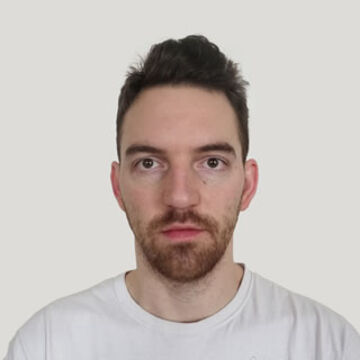| RS: Sound & Image |
Contemporary Practices |
1022 (012) |
Spring 2026 |
|
Description
This course emphasizes the relationship between the ear and the eye, sound and image. Students will research and explore how sonics and optics interact and will work across disciplines, creating music, images, and objects in order to more effectively connect the planes of sight and sound. Research will cover a wide array of artists and musicians, like Kurt Schwitters, Merzbow, Aphex Twin, and Lightning Bolt. Studio projects may culminate in the form of musical performances, installations, or happenings, and collaboration with other students is be encouraged. The music, texts, and artwork of Sun Ra will be a primary creative resource, and students will be given the opportunity to explore and research within the vast Sun Ra/El Saturn collection at the Experimental Sound Studio.
|
Class Number
1195
Credits
3
|
| Introduction to Sound Practices |
Art & Technology / Sound Practices |
2001 (003) |
Spring 2026 |
|
Description
This course will introduce students to basic techniques of working with sound as an artistic material. As a prerequisite for many of the department's upper level offerings, the class is designed to familiarize the student with both the technology and the historical and aesthetic background relevant to our facilities and courses, to the field of 'sound art' and experimental music in general, and to the application of sound in other disciplines (video, film, performance, installations, etc.) Equipment covered will include microphones, mixers, analog and digital audio recorders, signal processors and analog synthesizers. Hard-disk based recording and editing (ProTools) is introduced, but the focus is on more traditional analog studio technology. The physics of sound will be a recurring subject.
Examples of music and sound art, created using similar technology to that in our studios, will be played or performed and discussed in class. The listening list will vary according to the instructors' preferences. Readings are similarly set according to the instructors' syllabus: some sections employ more or less reading than others, contact specific instructors for details.
Students are expected to use studio time to complete weekly assignments, which are designed to hone technical skills and, in most cases, foster artistic innovation. Some of these projects can incorporate outside resources (such as the student's own computers and recordings), but the emphasis is on mastering the studio.
|
Class Number
1135
Credits
3
|
| Sound and Image |
Art & Technology / Sound Practices |
3011 (001) |
Fall 2025 |
|
Description
This course focuses on the relationship of sound to moving image, and introduces post-production techniques and strategies that address this relationship as a compositional imperative. Thorough instruction is given on digital audio post-production techniques for moving image, including recording, sound file imports, soundtrack composition and assembly, sound design, and mixing in stereo and surround-sound. This is supplemented by presentations on acoustics and auditory perception. Assigned readings in theories and strategies of sound-image relationships inform studio instruction. Assigned projects focus on gaining post-production skills, and students produce independent projects of their own that integrate sound and moving image.
Artists include Chantal Dumas, Walter Verdin, Deborah Stratman, Lucrecia Martel, Martin Scorcese, Abigail Child, Frederic Moffet, Gyorgi Palvi, Francis Ford Coppola, Gary Hill, and others. Writings in theory include texts by Michel Chion, Rick Altman, and others.
The student?s independent image-and-sound work is foregrounded and supported; supplemental assigned projects include sound sequence composition and ADR recording and mixing.
|
Class Number
1143
Credits
3
|
| Sound and Image |
Film, Video, New Media, and Animation |
3011 (001) |
Fall 2025 |
|
Description
This course focuses on the relationship of sound to moving image, and introduces post-production techniques and strategies that address this relationship as a compositional imperative. Thorough instruction is given on digital audio post-production techniques for moving image, including recording, sound file imports, soundtrack composition and assembly, sound design, and mixing in stereo and surround-sound. This is supplemented by presentations on acoustics and auditory perception. Assigned readings in theories and strategies of sound-image relationships inform studio instruction. Assigned projects focus on gaining post-production skills, and students produce independent projects of their own that integrate sound and moving image.
Artists include Chantal Dumas, Walter Verdin, Deborah Stratman, Lucrecia Martel, Martin Scorcese, Abigail Child, Frederic Moffet, Gyorgi Palvi, Francis Ford Coppola, Gary Hill, and others. Writings in theory include texts by Michel Chion, Rick Altman, and others.
The student?s independent image-and-sound work is foregrounded and supported; supplemental assigned projects include sound sequence composition and ADR recording and mixing.
|
Class Number
1498
Credits
3
|
| Programming for Sound:Max/MSP |
Art & Technology / Sound Practices |
3052 (001) |
Fall 2025 |
|
Description
This course will provide an introduction to programming for sound synthesis and real-time performance using Max/MSP. Students will be taught how to use Max from the ground up with the following applications in mind: experimental music, sound & video installation, digital synthesis, signal processing, sonic & intermedia performance, music composition, and more. They will learn the basic structures, concepts, strategies, and vocabularies of Max in order to prepare them for using these techniques within other courses across various departments. It is expected that students will come into the class without any previous experience working with Max/MSP.
|
Class Number
1145
Credits
3
|

